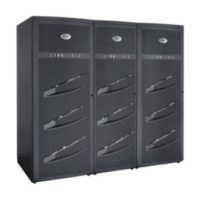I/O performance enhancements
113
Symmetrix DMX-3 Input/Output Operations
I/O performance enhancements
Symmetrix systems use these techniques to enhance performance:
◆ Split director functions — The director operations are split into
two functional parts, the channel director and disk director. The
channel director services requests from the host.
The disk director services requests between global memory and
disk. Splitting the director functions eliminates the processing
overhead and global memory locking associated with Control
Units that perform both functions.
◆ Multiple disk directors — The disk directors support Fibre
Channel drive loops ranging from 15 drives to 45 drives per loop.
“Fibre Channel disk subsystem” on page 62 and “Fibre Channel
disk directors (back-end)” on page 83 contains more information
on director and disk combinations.
◆ High-speed global memory — Global memory speed is greater
than the total speed of all components (for example, the directors)
that access it.
◆ Disk microprocessor and buffer — Each disk drive has its own
microprocessor and buffer that respond to the actuator level,
providing parallel processing of data. These features add another
level of global memory processing and improve overall
performance.
◆ Sequential access patterns — Access patterns can be sequential,
random, or a combination of both. When a miss occurs on a
sequential access pattern, the number of blocks brought into
global memory increases, which improves the hit rate because the
requested data is in global memory.

